Fire investigation is a complex discipline requiring a broad background in a variety of sciences, including chemistry, physics, engineering, and forensics. Fire investigators must possess an understanding of fire behavior, accelerants, heat transfer and burn patterns – among other topics. In addition to formal training, fire investigation is a career in which experience does make a difference. Additional field training and first-hand experience working at fire scenes produces more proficient investigators.
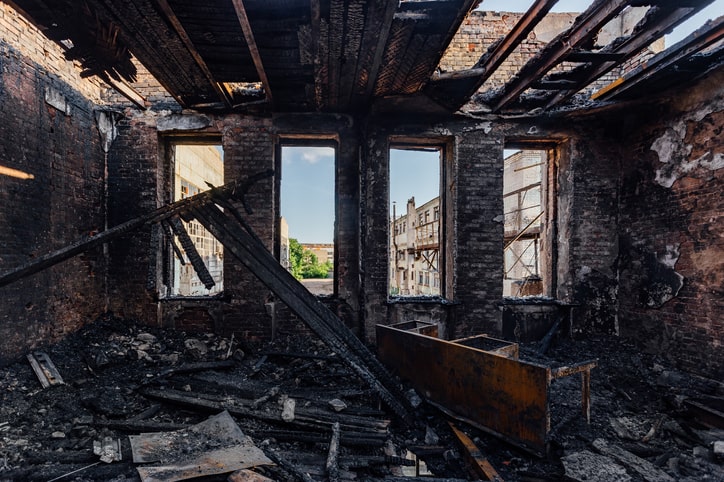
What is the origin and cause of a fire?
The ultimate goal of a fire investigator is to determine the fire’s origin and cause. The “point of origin” is the precise location where a fire was ignited, and the “cause” refers to the exact source(s) of the flame. Causation forensics, or the science behind determining the where, how and why a fire occurred, is important for several reasons.
To prevent future fires.
Determining the cause can serve as an indicator for predicting and preventing potential future fires.
To determine whether the fire was arson.
A full investigation must occur when criminal intent is suspected. Proper investigation procedures must be carefully followed in preparation for a potential criminal justice proceeding.
To identify the responsible party
Injuries, deaths, and loss of property may be the intentional results of a fire, or simply due to negligence. In both cases, an investigation can determine if a party or individual should be held responsible.
To submit information for an insurance claim.
When a home, building, or property is damaged, the insurance company will pursue whoever is at fault and may want to see proof of any damage. A thorough investigation can also identify cases of insurance fraud.
How do investigators determine the origin and cause of a fire?
While the majority of fires are ignited accidentally from cooking, heating, electricity and other potential heat sources electricity, arsons are set intentionally and require criminal investigation. Other fires that warrant thorough investigation include those with severe human injuries or fatalities, as well as those that may have originated as a result of electrical or appliance malfunction.
Fire investigation begins by physically examining and documenting the scene, making observations about the effects of the fire, smoke, and heat on the various materials that burned. An investigator takes measurements and notes various elements, such as electrical sources and combustibles, all while searching for potential sources that could have ignited the fire.
Next comes a scientific interpretation of the observations based on the fire tetrahedron, which is the understanding that fire needs fuel, oxygen, heat and a chemical chain reaction to burn. These observations, combined with burn pattern analysis, lead the investigator to an area of origin. Within this area, the investigator begins to rule out potential fire sources and eventually forms a hypothesis about where the exact point of origin is located.
In addition to examining the physical scene, investigators search for other background clues that help them piece together their theory by interviewing witnesses, researching the history of the property, and looking for other clues, such as damaged or vandalized safety systems and surveillance video. Upon completion of the investigation, a determination is made as to whether the fire was accidental, intentional, or incendiary.
How can technology like OSCR360 assist investigators in determining the point of origin?
OSCR360 is a valuable tool for assisting fire scene investigators in determining and documenting the point of origin and cause of a fire.
The OSCR360 System:
Provides fast and timely documentation of every scene.
No matter the how big or small the scene, OSCR360 captures complete scene overalls quickly and effectively, saving precious time and resources. OSCR360 can even enter and capture scenes that are unsafe or difficult for human access, which protects investigators and prevents scene degeneration as investigators wait for safer conditions. For example:
- An unstable second story can be “entered” and photographed from outside of the building using OSCR360 on its 27-ft mast. The OSCR camera is self-righting from any angle and captures environments spherically in 360-degrees.
- A crushed and burnt-out vehicle interior can be photographed by placing OSCR on one of the seats, the center console, or even the floor of the vehicle.
- Closets, powder rooms, elevators, and other small spaces are difficult to capture with standard photography. OSCR captures detail in a maneuverable 360-degree photo so that every inch and angle is preserved.
- Uncontrolled outdoor fires are difficult to document due to the sheer size of property that may be affected. OSCR360 captures the space in 360-degrees, linking one photograph to another while capturing geospatial relationships. This allows users to virtually walk through the scene later on.
Provides visual context for complex and dark scenes.
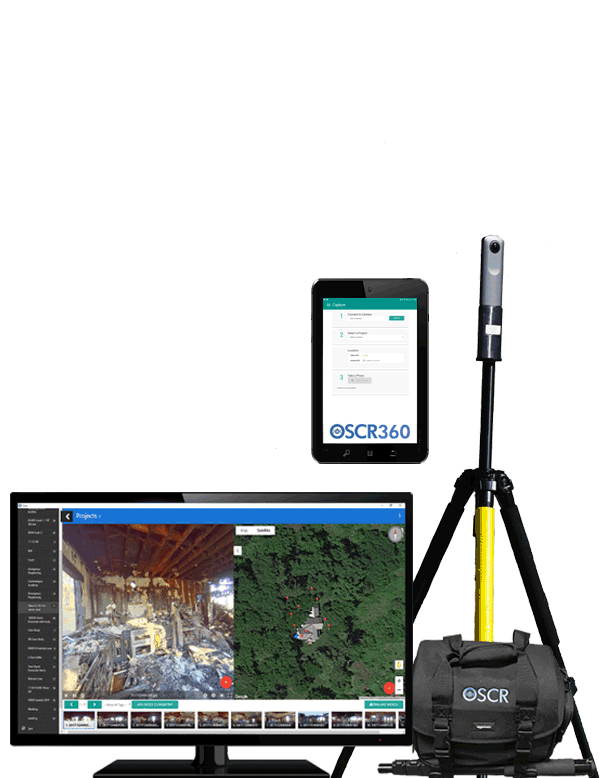
The remains of a fire scene are dark and covered with soot and ash. It can be difficult to distinguish one location from another in a photograph. Whereas standard digital photography only captures snippets of the scene to piece together, OSCR captures full spherical images from floor to ceiling, providing geographical context and identifying exact locations in which evidence was found.
These locations, or “Points of Interest,” are stored within the 360 images, creating a virtual walkthrough of the scene and all of the evidence found there. To the untrained eyes of a jury, many fire scenes look exactly the same. The context provided by OSCR360 images is a game changer for courtroom presentations.
Connects potential ignition sources and accelerants to the scene.
Within a room or space, OSCR360 fully captures burn patterns to illustrate directionality from the point of origin through the rest of the scene.
Documents the “digging” process.
After determining the point of origin, users can capture each step of shoveling through the debris. Photograph evidence as it is uncovered, layer by layer
Stores and organizes all digital evidence for seamless case management.
Within each 360-degree photograph, store other digital evidence as a clickable “point of interest.” Digital evidence includes close-up evidence photos, witness interview recordings, surveillance footage, and more. Blueprints and maps can overlay within the OSCR software for additional perspective and understanding of the scene.
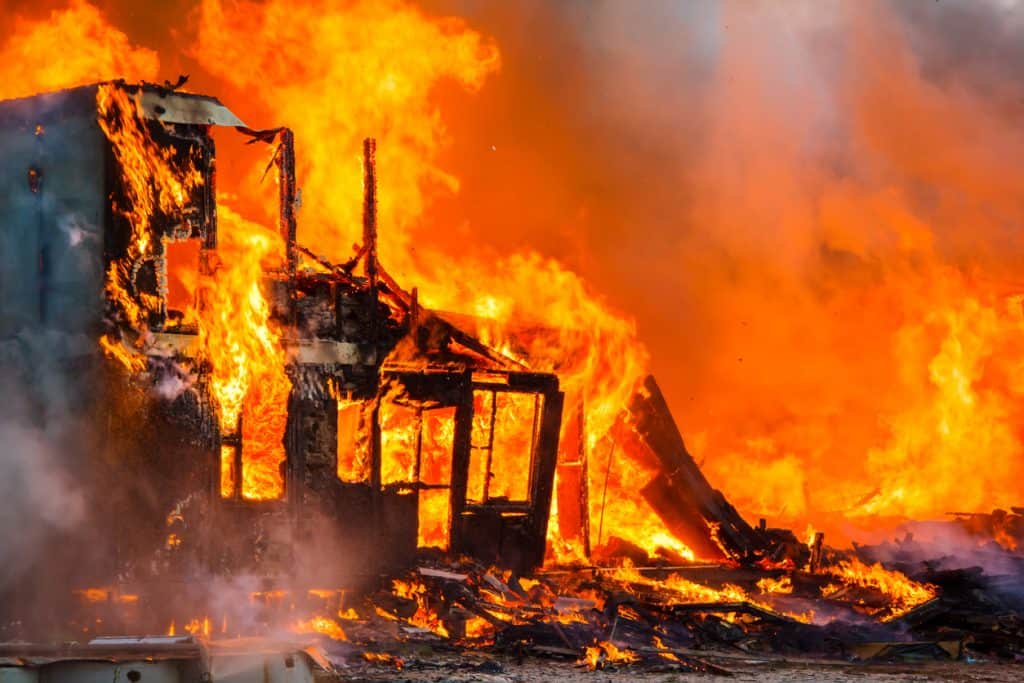
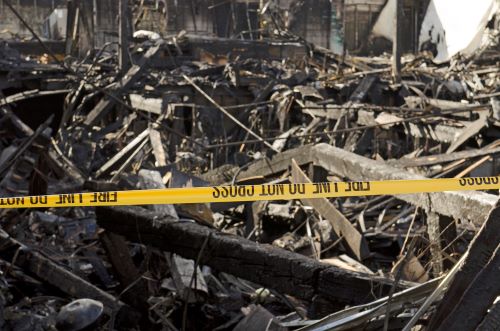
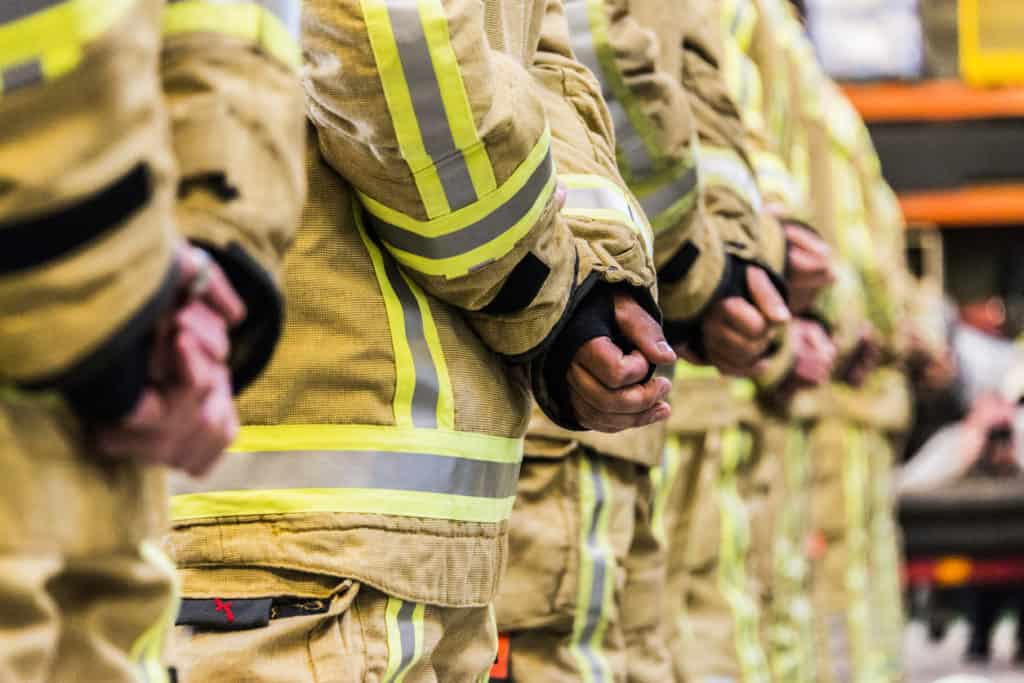
In addition to fire investigation, OSCR360 is invaluable to fire agencies for training purposes, post-incident analysis, code enforcement, HazMat documentation, and more.